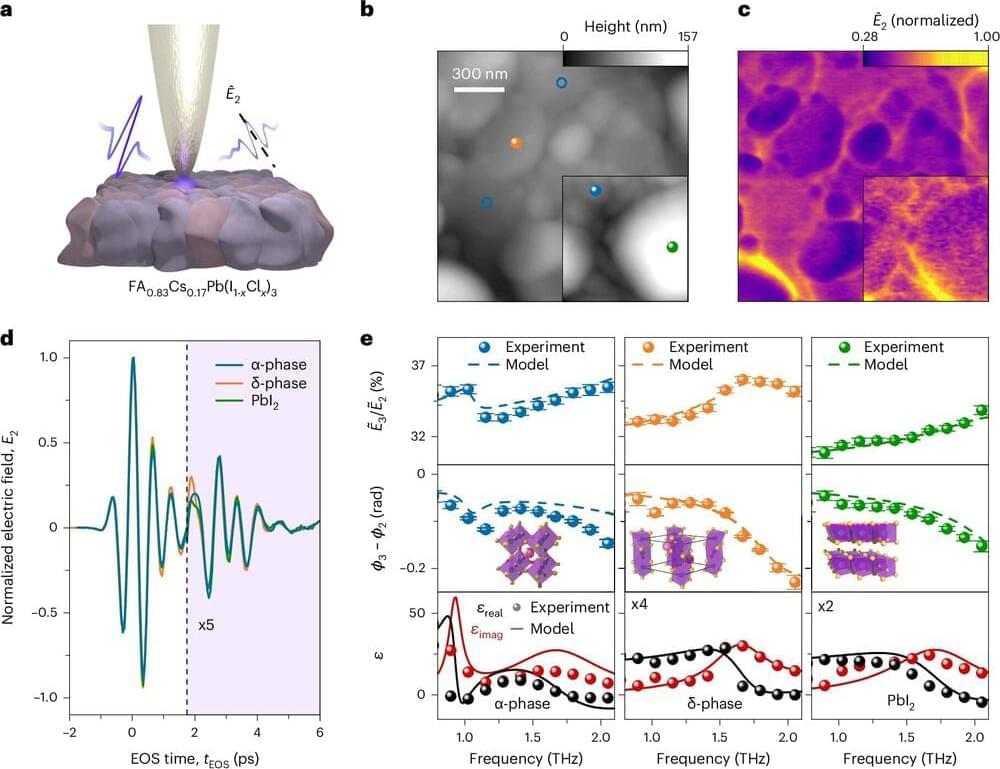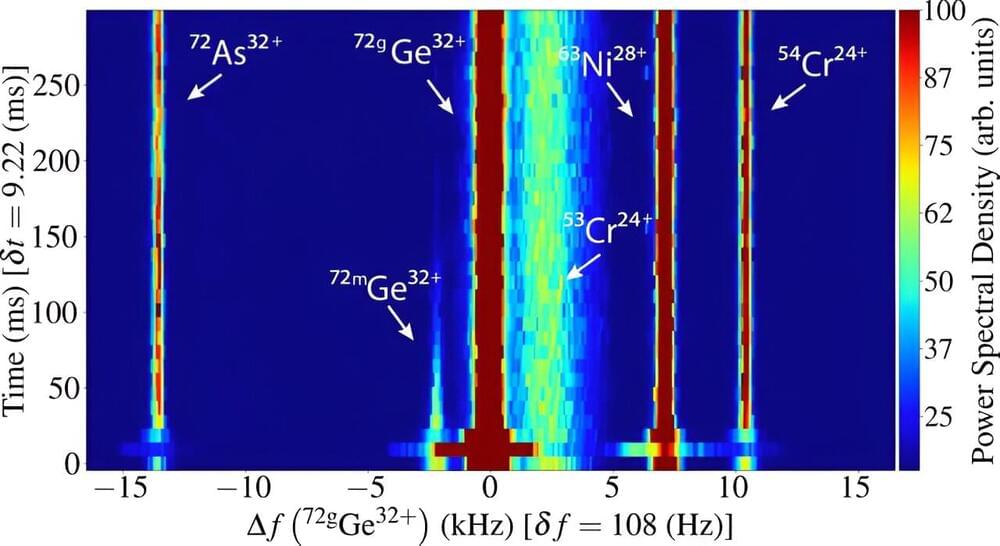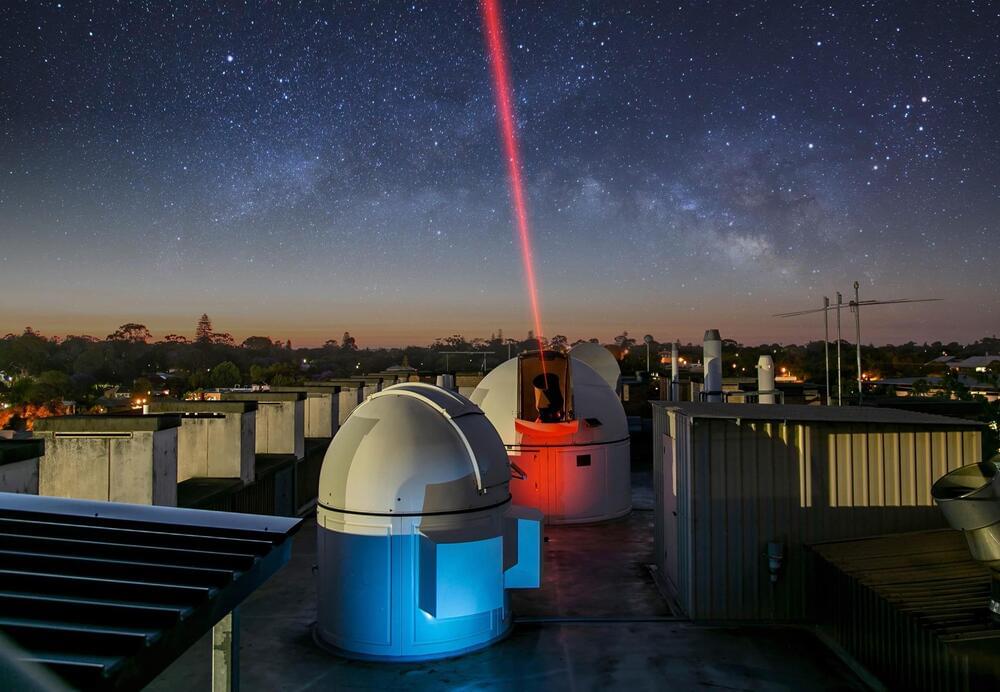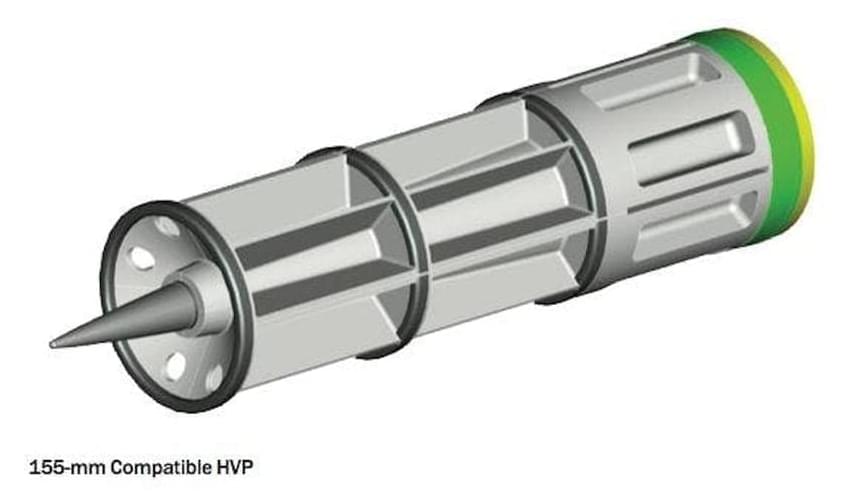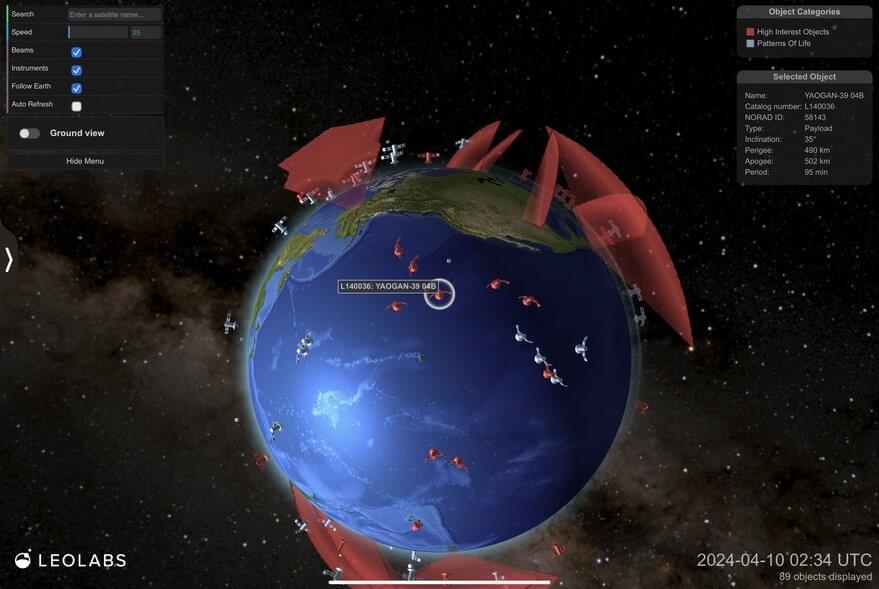For decades, scientists have been studying a group of unusual materials called multiferroics that could be useful for a range of applications including computer memory, chemical sensors and quantum computers.
In the search for more efficient and sustainable energy generation methods, a class of materials called metal halide perovskites have shown great promise. In the few years since their discovery, novel solar cells based on these materials have already achieved efficiencies comparable to commercial silicon solar cells.
For the first time, an international research team has succeeded in observing a two-photon decay on a so-called bare atomic nucleus from which the entire electron shell has been removed.
The University of Western Australia’s ‘TeraNet’, a network of optical ground stations specializing in high-speed space communications, has successfully received laser signals from a German satellite in low Earth orbit. This breakthrough paves the way for a 1,000-fold increase in communication bandwidth between space and Earth.
TeraNet’s laser communication test with OSIRISv1 marks a step towards replacing outdated radio systems with high-speed lasers for space communications in Western Australia. With funding from Australian governments, the network aims to support diverse missions, enhancing data transfer capabilities across multiple sectors.
Groundbreaking Laser Communications Test.
A newly developed stretchable lithium-ion battery retains efficient charge storage after 70 cycles and expands up to 5000%. This innovation caters to the growing demand for batteries in wearable electronics, ensuring flexibility and durability.
When you think of a battery, you probably don’t think of something stretchy. However, batteries will need this shape-shifting quality to be incorporated into flexible electronics, which are gaining traction for wearable health monitors. Now, researchers in ACS Energy Letters report a lithium-ion battery with entirely stretchable components, including an electrolyte layer that can expand by 5000%, and it retains its charge storage capacity after nearly 70 charge/discharge cycles.
Advancements in Flexible Electronics.
Aston University researchers and their international team have set a new data transmission record of 402 terabits per second using standard optical fiber, potentially stabilizing broadband costs as demand surges.
Researchers at Aston University, collaborating with a team, have achieved a new record by transmitting data at a rate of 402 terabits per second through commercially available optical fiber. This accomplishment surpasses their prior record set in March 2024, where they managed to send data at 301 terabits per second, equivalent to 301,000,000 megabits per second, using a single standard optical fiber.
According to the researchers, “If compared to the internet connection speed recommendations of Netflix, of 3 Mbit/s or higher, for watching an HD movie, this speed is over 100 million times faster.”
Related: High-G data recorder helps Air Force munitions testing
The Army wants a company to build and deliver MDAC prototypes using existing fielded and mature technologies. MDAC will be air-, rail-, and sea-transportable per MIL-STD-1366; will be able to move rapidly for survivability; have automated high rates of fire with HVP; and have emote weapon firing; have deep magazine capacity, rapid ammunition resupply, and high operational availability. Companies interested also will demonstrate supportability, safety, and cyber security.
Officials of the Army Rapid Capabilities and Critical Technologies Office (RCCTO) at Fort Belvoir, Va., issued a request for information on Monday for the Hypervelocity Projectile (HVP) project.
Army officials want a company able to deliver HVP prototypes no later than fall 2027 for operational demonstrations in 2028, and later for possible deployment. Hypervelocity projectiles fly through the air at speeds of 8 or 9 times the speed of sound.
The signature air-power program aims to be first such effort with artificial intelligence fully baked into every aspect.
LeoLabs to support UK’s Project Tyche
Posted in space
LeoLabs will provide space tracking and monitoring, and collision-avoidance services to the U.K. Space Command’s Project Tyche.

